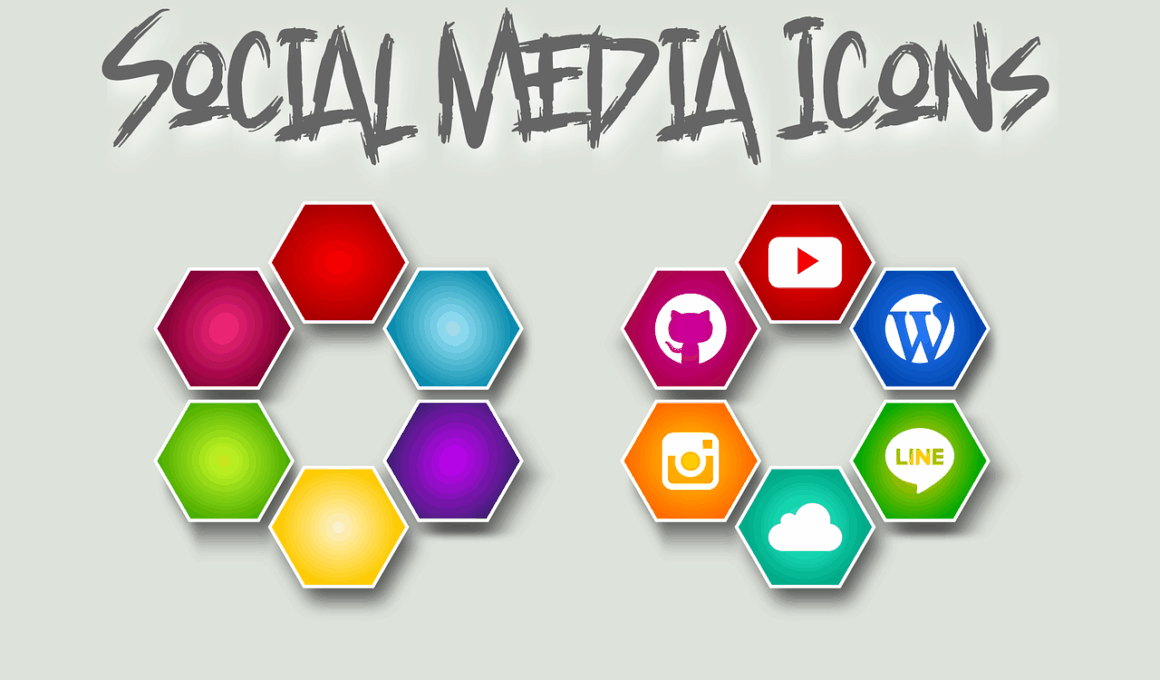How Storytelling Drives Conversion and Sales on Social Media
Brand storytelling is a revolutionary technique that transforms how companies interact with their audiences on social media. Storytelling taps into the emotional aspects of consumer psychology. This process allows brands to connect deeply with their customers by sharing authentic narratives. Every effective story begins with a strong relatable character, leading the audience to become personally invested. Brands should aim to present real-life stories, challenges, and successes that resonate with their target demographics. This strategy makes the brand more relatable, encouraging followers to engage meaningfully. Through authentic storytelling, brands can build trust, an essential factor in fostering customer loyalty. As consumers increasingly seek personalized experiences, tailored narratives help brands to stand out. Brands that master storytelling can inspire emotions that drive action, ultimately resulting in increased conversions and sales. Understanding the audience’s preferences, interests, and pain points proves vital in crafting engaging tales that capture attention. Lastly, aligning brand narratives with social media platforms enhances outreach, allowing companies to effectively convey their message to larger audiences.
The next crucial aspect of effective brand storytelling on social media involves leveraging multiple content formats. While text storytelling has its merits, incorporating visuals significantly enhances audience retention and engagement. Brands should utilize images, videos, and infographics to strengthen narratives and demonstrate product benefits. For instance, video storytelling can evoke emotions far better than static images or text alone. Brands can share customer testimonials through video clips, allowing potential buyers to hear experiences from real users, which builds credibility. Additionally, interactive content like polls and quizzes can further engage the audience, making them a part of the narrative. This participatory format creates deeper connections as audiences feel their opinions matter. Social media platforms like Instagram, Facebook, and TikTok are designed to support diverse content types, enabling brands to capture various segments of their audience effectively. By mastering content strategy, brands can share their stories across many mediums, allowing flexibility in how to reach and influence their audience. Overall, brands should experiment with formats to find the right mix that resonates with their followers. Audience feedback is key to refining storytelling approaches over time.
Another significant consideration for brands is maintaining a consistent voice and messaging across social media channels. Given the fast-paced nature of social media, it is easy for brands to stray from their core identity. However, customers expect a certain level of authenticity and coherence in brand storytelling. By establishing a unique brand voice, whether comedic, serious, or quirky, brands can create familiarity among their followers. Consistent messaging builds a cohesive story that enhances brand recognition, making it easier for potential customers to recall the brand when making purchasing decisions. Crafting a brand persona allows companies to engage audiences effectively while reinforcing their storytelling efforts. Furthermore, connecting different narratives across platforms helps to maintain continuity, making proof points compelling. In addition, a well-crafted website messaging that aligns with social media tells a more comprehensive story as well. Effective brand continuity across touchpoints cultivates trust over time. Strong storytelling is not just about the story itself but how it is delivered, where repetition in a unique voice can help drive conversions, leading to sales as consumers feel assured about their choices.
Utilizing Customer-Centric Stories
Besides a brand’s own stories, including customer-centric narratives can be transformational in achieving marketing goals. Brands should encourage customers to share their experiences through reviews and user-generated content. By showcasing real stories from actual customers, brands allow potential buyers to see relatable scenarios. Customers appreciate authenticity, and showing real stories highlights how products solve pain points. These testimonials can be compiled in visually appealing formats, like highlight reels or Instagram stories, driving engagement as consumers see validation from their peers. Additionally, incentives could be offered for sharing experiences, like discounts or giveaways, encouraging participation. Brands that embrace customer stories can foster community building around their products. Dedicated hashtags for branding purposes invite customers to join the narrative actively. As stories unfold, audiences are informed and inspired, which influences their purchasing decisions positively. Furthermore, customers often interact with posts containing relatable narratives, leading to organic promotion as more people engage and share. This sharing process seamlessly integrates storytelling into social media strategy, increasing trustworthiness while driving further conversions. Consistent encouragement of customer stories deepens overall brand impact and narrative reach.
Moreover, leveraging social media analytics is crucial for refining storytelling approaches. Data-driven insights allow brands to identify what resonates with their audience. By monitoring engagement metrics, brands can pinpoint which stories yield higher interactions. Tracking likes, comments, shares, and conversion rates enables brands to measure the impact of their narratives effectively. Furthermore, A/B testing different storytelling methods across various audience segments can provide valuable insights into preferences. Brands should also pay attention to feedback in the comments section, as direct communication offers invaluable insights into audience expectations. Understanding shifts in consumer behavior enables brands to adapt storytelling to remain relevant. Personalization efforts in storytelling can also enhance engagement. Utilizing data to target specific demographics allows brands to tailor narratives to individual interests. These refined strategies create a more profound connection with audiences. Additionally, seasonal and trend-driven storytelling aligns with consumer sentiments, showcasing that brands are in tune with their customer environment. Embracing an agile storytelling method not only boosts engagement but also aids in improving customer loyalty and driving conversions effectively.
For effective storytelling, brands must embrace authenticity over perfection. Modern consumers are increasingly discerning; they seek genuine connections instead of polished advertisements. Telling real stories about challenges, failures, and how brands overcome obstacles adds vulnerability that resonates. For instance, sharing behind-the-scenes content cultivates transparency, making brands more relatable. Consumers are likely to engage more with brands that show honest, unfiltered moments. Additionally, successful storytelling often incorporates elements of humor or surprise, evoking emotions essential for creating memorable experiences. Brands can employ humor carefully to resonate without undermining their messages. Moreover, integrating a Call-to-Action (CTA) within narratives effectively guides audience behavior. Inviting customers to ‘like,’ ‘share,’ or ‘comment’ about their favorite story can stimulate engagement. Crafting CTAs carefully ensures the narrative resonates and encourages a desired action. This balance of authenticity and strategy is crucial for modern social media marketing as era shifts continuously. It ultimately directs audiences toward conversions while fostering a lasting emotional connection. As storytelling becomes increasingly essential, harnessing genuine approaches in emotional narratives presents both challenges and opportunities for brands.
Conclusion: The Power of Storytelling
Ultimately, storytelling on social media represents an art form that necessitates continual refinement. Brands that prioritize authentic narratives resonate more profoundly with consumers, leading to improved relationships over time. As audiences search for connection and meaning, storytelling offers a powerful tool for brands to cut through the noise of competition. When brands internalize their values and share their journeys with relatable emotional connections, they cultivate trust. This trust transforms followers into loyal customers, significantly impacting conversions and sales. Ultimately, establishing a memorable brand presence relies on the effectiveness of storytelling. As the social media landscape continually evolves, evolving storytelling strategies will be vital. Consumers increasingly prefer interactive content and authenticity; brands that adapt accordingly can build stronger relationships. Continuous innovation and experimentation with narratives and formats will keep brands relevant and engaging in their approach. Social media storytelling is more than a trend; it is an ongoing process that, when executed effectively, leads to remarkable business outcomes. Hence, brands need to embrace and refine these techniques to leverage the full potential of social media storytelling strategies. The future lies in the stories we tell.


